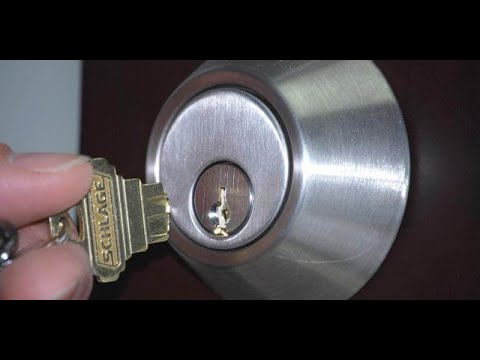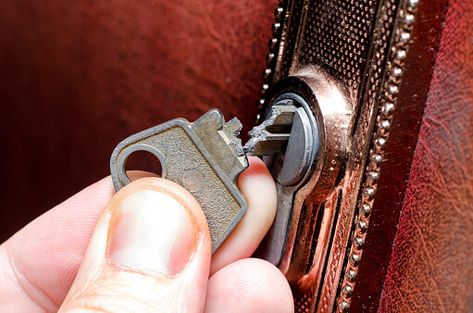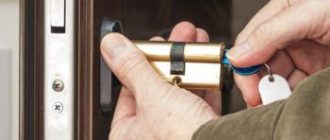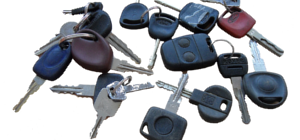
Easy ways to remove a broken key from a lock
Getting a key stuck and broken in a lock is a frustrating and common problem that many people encounter. Luckily, there are several easy ways to extract a broken key from a lock without causing any damage to the lock mechanism. With the right tools and techniques, you can quickly remove the broken key and regain access to your property.
One of the simplest methods to extract a broken key from a lock is by using tweezers or needle-nose pliers. These tools can be used to grip the broken key and gently pull it out of the lock. It’s important to be careful and not apply too much force, as this could cause further damage to the lock.
If the broken key is deeply embedded in the lock and cannot be easily reached with tweezers or pliers, another effective technique is using a broken key extractor. These extractors are specifically designed to safely remove broken keys from locks. By inserting the extractor into the lock and turning it, you can catch the broken key and extract it with ease.
For more stubborn broken keys that are difficult to remove, using lubricants such as WD-40 can be helpful. Applying a small amount of lubricant to the lock can make it easier to extract the broken key. It’s important to let the lubricant sit for a few minutes before attempting to remove the key.
In conclusion, if you find yourself with a broken key stuck in a lock, there are simple techniques you can try to remove it. Whether it’s using tweezers or pliers, utilizing a broken key extractor, or using lubricants, these methods can help you get the broken key out without causing any damage to the lock. Remember to proceed with caution and not apply excessive force to avoid worsening the situation.
Key Extraction Techniques: Breaking the Lock
When you find yourself dealing with a broken key stuck in a lock, it can be frustrating and inconvenient. However, there are easy and effective ways to remove the broken key and get the lock back in working order. Here are a few key extraction techniques:
- Needle Nose Pliers: If the broken key is protruding from the lock, you can use needle nose pliers to gently grip and pull it out. Be careful not to apply too much force, as you may further damage the lock.
- Key Extractor Tool: A key extractor tool is a specialized tool designed for removing broken keys from locks. It has a hook-shaped end that can be inserted into the lock to catch the broken key and safely remove it.
- Super Glue: If the key is broken off inside the lock and neither of the above techniques work, you can try using super glue. Apply a small amount of super glue to the end of a thin, metal item such as a paperclip or bobby pin. Insert the glue-coated end into the lock and press it against the broken key piece. Allow the glue to dry, and then gently pull the broken key out.
- Lock Lubricants: In some cases, a broken key may be stuck due to rust or debris in the lock mechanism. Applying a lock lubricant, such as a graphite powder or silicone spray, can help loosen the key and make it easier to remove.
- Call a Professional Locksmith: If you are unable to remove the broken key using the aforementioned techniques or if you feel uncomfortable attempting to do so, it is best to call a professional locksmith. They have the skills, knowledge, and specialized tools to safely extract the broken key and repair any damage to the lock.
Remember, when attempting to extract a broken key from a lock, it is important to proceed with caution and avoid applying excessive force. If you are unsure or uncomfortable with the process, it is always best to seek the help of a professional locksmith.
Simple Methods for Retrieving a Broken Key
When a key breaks inside a lock, it can be quite frustrating. However, there are simple techniques that you can use to remove the broken key and regain access to your lock. The following methods are easy to follow and can save you time and money:
- Tweezers: If the broken key is protruding from the lock, you can use tweezers to carefully remove it. Gently grasp the broken key with the tweezers and pull it out of the lock.
- Super glue: Apply a small amount of super glue to the end of a paperclip or toothpick. Insert the glue-covered tip into the lock and stick it to the broken key. Wait a few seconds for the glue to dry and then gently pull the key out.
- Lock lubricant: Spray some lock lubricant into the lock to loosen the broken key. Insert a small, pointed object like a bobby pin or an unbent paperclip into the lock and try to hook onto the broken key. With a gentle pull, you can remove the broken key.
- Broken key extractor: This is a tool specifically designed to remove broken keys from locks. Insert the extractor into the lock and maneuver it around the broken key. Once the extractor has a firm grip on the broken key, pull it out of the lock.
Remember, it is important to be patient and delicate when attempting to retrieve a broken key from a lock. Avoid using excessive force, as this can cause more damage to the lock. If all else fails, it is best to call a professional locksmith to assist you.
Common Scenarios when Key Extraction is Required
When dealing with a broken key, it is important to understand the common scenarios where key extraction becomes necessary. These scenarios often occur when the key is stuck or has snapped inside the lock, making it difficult or impossible to remove without specialized tools or techniques.
Some common scenarios when key extraction is required include:
1. Broken Key in the Lock: One of the most common scenarios is when a key breaks inside the lock. This can happen due to wear and tear, excessive force, or using an old or worn-out key. When the key breaks, it becomes difficult to remove without the right tools.
2. Key is stuck: Another scenario is when the key gets stuck in the lock, making it impossible to turn or remove. This can happen due to debris or dirt inside the lock, a misaligned lock mechanism, or a faulty key.
3. Foreign object inside the lock: Sometimes, a foreign object may get stuck inside the lock along with the key, making it difficult to remove. This can happen if the lock is not properly maintained or if something accidentally gets inserted into the lock.
4. Attempting to forcefully remove a broken key: In some cases, individuals may try to forcefully remove a broken key from the lock using tools like pliers or tweezers. However, this can often cause more damage to the lock mechanism and make key extraction more challenging.
These are just a few common scenarios where key extraction becomes necessary. In such situations, it is advisable to seek the assistance of a professional locksmith who has the expertise and tools to safely and efficiently remove the broken key without causing further damage to the lock.
Traditional Tools for Removing a Broken Key
In addition to the various ways to remove a broken key from a lock using household items, there are also traditional tools specifically designed for this task. These tools are easy to use and can be very effective in removing the broken key.
1. Key Extractor Set: This tool set contains several different hooks and probes that can be used to remove a broken key. It is designed to fit into the lock and hook onto the key, allowing you to easily pull it out.
2. Needle Nose Pliers: Needle nose pliers can be used to remove a broken key if it is sticking out of the lock. The long, thin jaws of the pliers can grip the key and allow you to pull it out effortlessly.
3. Tweezers: Tweezers are another handy tool for removing a broken key. They can be used to grab onto the key and carefully pull it out of the lock.
4. Broken Key Extractor: This tool is specifically designed for removing broken keys from locks. It has a slim profile that can fit into narrow keyways, and a hook at the end that can grip onto the broken key and pull it out.
5. Jigsaw Blade: In some cases, a jigsaw blade can be used to remove a broken key. The blade can be inserted into the lock and used to push the key out from the inside.
Note: When using any of these traditional tools, it is important to be gentle and patient. Applying too much force can cause more damage to the lock or the key.
Advanced Techniques for Extracting Broken Keys
When a key breaks inside a lock, it can be a frustrating and challenging situation. However, there are advanced techniques that can be used to safely remove the broken key from the lock. Here are some ways to extract broken keys:
- Tweezers: One of the simplest ways to remove a broken key is by using a pair of tweezers. Gently insert the tips of the tweezers into the lock and carefully pull out the broken key. This method works best if the broken key is sticking out of the lock.
- Lock Lubricant: If the broken key is stuck inside the lock and is not easily accessible, applying lock lubricant can help loosen it. Spray the lubricant into the lock and use a key extractor tool to gently push the broken key out.
- Key Extractor Tool: A key extractor tool is specifically designed for removing broken keys from locks. Insert the tool into the lock and turn it counterclockwise, allowing the tool to catch on the broken key and pull it out.
- Broken Key Removal Kit: If you frequently encounter broken key situations, investing in a broken key removal kit can be beneficial. These kits usually include various tools like key extractors, tweezers, and lubricants to effectively remove broken keys.
- Call a Professional: If all else fails, it is best to call a professional locksmith. They have the skills and expertise to extract broken keys from locks without causing any further damage.
It is important to approach broken key extraction with caution and patience. If you are unsure or uncomfortable with any of these advanced techniques, it is always best to seek professional help to avoid causing damage to the lock or injuring yourself.
Professional Key Extraction Services
If you have a broken key stuck in your lock, it can be frustrating and time-consuming to try to remove it yourself. Fortunately, there are professional key extraction services that can safely and efficiently remove a broken key from a lock.
These professionals have the expertise and tools necessary to extract the key without causing any further damage to the lock. They use various methods depending on the situation. Let’s take a look at some of the ways they can remove a broken key:
| 1. Key Extractors | A key extractor is a specialized tool that is designed to grip the broken key and remove it from the lock. The locksmith will insert the key extractor into the lock and carefully maneuver it to grip the broken key. Once the key is securely gripped, the locksmith will pull it out of the lock. |
| 2. Lock Lubrication | Sometimes, a broken key can be difficult to extract because it is stuck due to rust or lack of lubrication. In such cases, the locksmith will use a lubricant to loosen the key and make it easier to remove. They will carefully apply the lubricant to the lock and then use a key extractor to remove the broken key. |
| 3. Lock Disassembly | In some cases, the broken key may be lodged deep inside the lock and cannot be easily accessed. In such situations, the locksmith may need to disassemble the lock to remove the broken key. They will carefully take apart the lock, remove the broken key, and then reassemble the lock. |
It’s important to note that attempting to remove a broken key yourself can cause further damage to the lock, making it more difficult to extract the key and potentially leading to the need for a lock replacement. That’s why it’s recommended to hire a professional key extraction service to ensure the safe removal of the broken key.
If you find yourself in a situation where you have a broken key stuck in a lock, it’s best to leave the extraction to the professionals. They have the knowledge, experience, and tools to get the job done efficiently and effectively.
Safety Measures to Consider during Key Extraction
When dealing with a broken key stuck in a lock, it is important to prioritize safety to avoid any further damage or injury. Here are some safety measures to consider during key extraction:
- Wear protective gloves to protect your hands from any sharp edges or potential injuries during the key removal process.
- Ensure the area is well-lit to better visualize the key and any potential hazards.
- Use proper tools designed specifically for key extraction. Avoid makeshift tools that may cause further damage to the lock or surrounding area.
- If possible, turn off the electricity to the area to minimize the risk of accidental shock or short-circuiting any electrical components.
- Take your time and be patient while attempting to remove the key. Rushing can increase the likelihood of mistakes or accidents.
- Avoid excessive force that can lead to breaking the key further or damaging the lock mechanism.
- If you encounter any difficulty or are unsure about the key extraction process, consider seeking professional help from a locksmith.
- Keep children and pets away from the area to prevent any accidents or injuries.
- Once the key has been successfully removed, inspect the lock and key for any damage or wear. Consider replacing the lock or key if necessary.
By following these safety measures, you can ensure a safe and easy key extraction process without causing any further damage or harm.
Key Extraction for Different Types of Locks
When a key is broken inside a lock, it can be a frustrating experience. However, there are easy ways to extract the broken key from different types of locks.
For a pin tumbler lock, which is the most common type of lock, there are a few techniques that can be used. One method is to use a pair of needle-nose pliers to grip the broken key and gently pull it out. Another method is to use a broken key extractor tool, which is specifically designed for extracting broken keys from locks. This tool has a hooked end that can be inserted into the lock to grab and remove the broken key.
For a wafer lock, which is often found in older cars and cabinets, there are also simple ways to extract a broken key. One method is to use a small jigsaw blade or a thin piece of metal to carefully push the broken key out from the sides of the lock. Another method is to use a locksmith’s broken key extraction tool, which works in a similar way to the one used for pin tumbler locks.
In summary, if you find yourself with a broken key inside a lock, there are easy ways to extract it. Whether it’s a pin tumbler lock or a wafer lock, tools such as needle-nose pliers, broken key extractors, jigsaw blades, or locksmith’s extraction tools can help you remove the broken key and regain access to your lock. Remember to handle the broken key and the lock with care to avoid causing further damage.
Step-by-Step Guide: How to Extract a Broken Key
Accidents happen, and sometimes a key can break off in a lock. It can be a frustrating situation, but fear not! There are several ways to remove a broken key from a lock, and most of them are fairly easy and can be done with common household items.
1. Use pliers: One of the simplest ways to remove a broken key is to use a pair of pliers. First, grab the broken end of the key with the pliers, then gently pull it out of the lock. Be careful not to apply too much force, as this may cause the key to break further or damage the lock.
2. Use tweezers: If the broken key is sticking out of the lock, you may be able to remove it with a pair of tweezers. Simply grip the broken key with the tweezers and carefully pull it out of the lock. Again, be cautious not to exert too much force.
3. Use a broken key extractor tool: Another option is to use a broken key extractor tool, which is specifically designed to remove broken keys from locks. These tools typically come with different tips and hooks that fit into the lock and allow you to easily remove the broken key. Follow the instructions that come with the tool for best results.
4. Use a lubricant: Sometimes a broken key may be difficult to extract due to rust or other debris in the lock. In this case, applying a lubricant, such as WD-40, can help loosen the key and make it easier to remove. Spray the lubricant into the lock and on the broken key, then try using pliers or tweezers to remove it.
5. Call a locksmith: If all else fails, or if you are uncomfortable attempting to remove the broken key yourself, it’s best to call a professional locksmith. They have the expertise and tools necessary to safely remove the broken key without causing further damage to the lock.
Remember, it’s important to be patient and careful when extracting a broken key from a lock. Rushing or using excessive force can lead to more problems and potentially require expensive repairs. Take your time, follow these steps, and you’ll have the broken key out in no time!
Precautions to Avoid Damaging the Lock
When attempting to remove a broken key from a lock, it’s important to take certain precautions to avoid causing any further damage. Here are some easy ways to ensure you don’t harm the lock:
| 1. Use lubrication: | Before inserting any tools into the lock to extract the broken key, apply lubricant to the keyway. This will help reduce friction and make it easier to remove the key without causing damage. |
| 2. Use the right tools: | Make sure you have the appropriate tools for extracting a broken key. Using the wrong tools can not only damage the lock but also make it more difficult to remove the key. |
| 3. Be gentle: | When attempting to remove the broken key, avoid using excessive force. Apply steady and gentle pressure to avoid further damaging the lock. |
| 4. Seek professional help if needed: | If you are unsure about how to remove the broken key or if you are unable to do it safely, it’s best to seek the assistance of a professional locksmith. |
By following these precautions, you can increase the chances of successfully extracting a broken key from a lock without causing any damage.
DIY Key Extraction: Tips and Tricks
When a key gets broken in a lock, it can be a frustrating experience. However, with the right techniques and a little bit of patience, you can remove a broken key from a lock with ease. In this article, we will share some simple tips and tricks for DIY key extraction.
Firstly, it’s important to gather the necessary tools. You will need a pair of needle-nose pliers, a small screwdriver or a paperclip, and a lubricant such as WD-40.
Next, assess the situation and determine the best approach for key extraction. If the broken key is sticking out of the lock, you can try using the needle-nose pliers to gently pull it out. Be careful not to apply too much force, as this can cause the key to break further.
If the broken key is lodged deep inside the lock, you can try using the small screwdriver or paperclip to push it out. Insert the tool into the lock, gently maneuver it, and apply slight pressure on the key to push it towards the opening of the lock.
In some cases, the broken key may be stuck due to rust or debris inside the lock. In such situations, applying a lubricant like WD-40 can help loosen the key and make it easier to extract. Spray a small amount of the lubricant into the lock, wait for a few seconds, and then attempt to remove the key again.
If all else fails, it may be time to call a professional locksmith. They have the experience and tools necessary to safely and efficiently extract a broken key from a lock without causing any further damage.
| 1. Gather the necessary tools: needle-nose pliers, screwdriver/paperclip, lubricant |
| 2. Assess the situation and choose the best approach |
| 3. Use pliers to pull out the broken key if it’s sticking out |
| 4. Use a screwdriver or paperclip to push out a deeply lodged key |
| 5. Apply lubricant to loosen the key if necessary |
| 6. Contact a locksmith if DIY methods are unsuccessful |
With these tips and tricks, extracting a broken key from a lock can be an easy task. Remember to take your time, be patient, and always prioritize your safety. Good luck!
Key Extraction as a Preventive Measure
There are several ways to extract a broken key from a lock, but it is always better to prevent such situations from happening in the first place. Here are a few preventive measures that can be taken to avoid key extraction:
- Handle the key with care: Be gentle when inserting or removing the key from the lock. Avoid using excessive force or turning the key too forcefully.
- Maintain your locks: Regularly clean and lubricate your locks to ensure smooth operation. This can help reduce the chances of a key getting stuck or breaking inside the lock.
- Use a duplicate key: Have a duplicate key made and keep it as a spare. This way, if the original key gets broken, you can easily remove it from the lock and use the spare key instead.
- Seek professional help: If you encounter any difficulties with your locks or keys, it is always best to consult a professional locksmith. They have the knowledge and tools to safely remove a broken key from a lock without causing any further damage.
- Consider upgrading your locks: If you frequently experience key extraction or any other lock-related issues, it might be worth considering upgrading your locks to a more secure and reliable option. Modern locks are designed to be more resistant to key-related problems.
By following these easy preventive measures, you can significantly reduce the likelihood of needing to extract a broken key from a lock. Remember to always handle your keys and locks with care to avoid unnecessary damages.
Key Extraction Products and Tools to Keep at Hand
When a key gets stuck or breaks inside a lock, it can be a frustrating situation. However, with the right tools and techniques, extracting the broken key can be an easy task. Here are some key extraction products and tools that you should always keep at hand:
1. Key Extractor Set: A key extractor set is specifically designed to remove broken keys from locks. It consists of various size hooks that can be inserted into the lock to catch onto the broken key and pull it out. This set is essential for any locksmith or someone dealing with broken key situations.
2. Lubricant: A good lubricant can help loosen up the lock and make it easier to extract the broken key. Apply a small amount of lubricant to the keyhole and use a key extractor tool to remove the broken key.
3. Needle Nose Pliers: Needle nose pliers can be used to grip onto the broken end of the key and slowly pull it out. They are especially useful when the broken key is sticking out of the lock, making it easier to grab onto.
4. Broken Key Extractor Kit: This kit includes specialized tools that are designed to extract broken keys from locks. It typically comes with different size extractors and a detailed guide on how to use them effectively.
5. Strong Magnet: In some cases, especially when dealing with keys made of magnetic materials, a strong magnet can be used to pull the broken key out of the lock. Simply place the magnet near the keyway and the magnetic force will attract the broken key.
Remember, it’s always a good idea to have these key extraction products and tools readily available, as you never know when you might need them. With these tools at hand and the right technique, extracting a broken key from a lock can be a simple and hassle-free process.
Seeking Professional Help for Key Extraction
While attempting to remove a broken key from a lock may seem like an easy task, it can often lead to further damage and complications. This is why it is advisable to seek professional help for key extraction.
Professional locksmiths have the necessary skills, knowledge, and tools to safely and efficiently remove a broken key from a lock. They are trained in various techniques that can tackle different types of key extractions, ensuring minimal damage to the lock.
By relying on a professional locksmith, you can avoid the risk of causing further damage to the lock, which could result in costly repairs. Moreover, professionals have access to specialized tools that are specifically designed for key extraction, making the process quicker and more effective.
Attempting to remove a broken key yourself may seem like a cost-saving solution, but it can actually lead to more expenses in the long run. It is important to prioritize the security and functionality of your lock by entrusting the extraction to a professional.
In conclusion, seeking professional help for key extraction is the best course of action when dealing with a broken key and lock combination. By doing so, you can ensure a safe and successful removal process without causing any additional damage.
Q&A:
What are some simple techniques for extracting a broken key from a lock?
There are several techniques you can try to extract a broken key from a lock. You can use tweezers, a broken key extractor tool, a jigsaw blade, or even a small amount of super glue.
How do I use tweezers to extract a broken key from a lock?
To use tweezers, you will need to gently insert them into the lock alongside the broken key. Once the tweezers are in place, apply gentle pressure and slowly pull the broken key out.
What is a broken key extractor tool and how does it work?
A broken key extractor tool is a type of device specifically designed for removing broken keys from locks. The tool typically has a series of hooks or ridges that can be inserted into the lock alongside the broken key. By maneuvering the tool, you can engage the hooks or ridges with the broken key and pull it out.
Can I use a jigsaw blade to extract a broken key from a lock?
Yes, a jigsaw blade can be effective in removing a broken key from a lock. To use a jigsaw blade, insert it into the lock alongside the broken key and carefully maneuver it to hook onto the key. Once hooked, gently pull the key out of the lock.
How does using super glue help in extracting a broken key from a lock?
Using a small amount of super glue can be helpful in extracting a broken key from a lock. To use this technique, apply a small drop of super glue to the end of a thin, rigid object such as a toothpick or paperclip. Insert the glue-coated end into the lock alongside the broken key and press it against the broken piece of the key. Hold it in place until the glue sets, and then slowly pull the broken key out.







